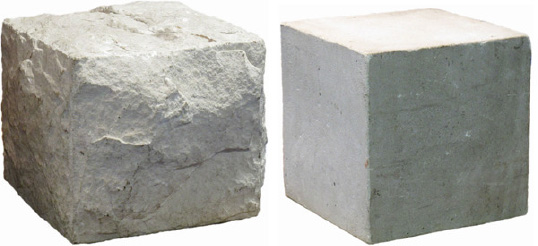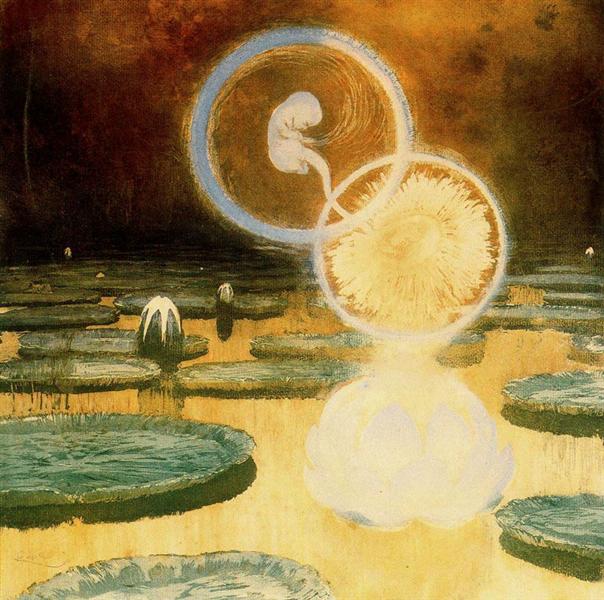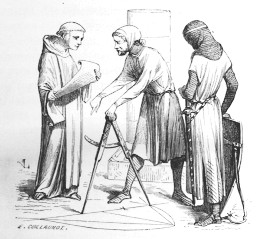Masonic Articles and Essays
The Rough and Perfect Ashlars
Exc... Bro... Tzadkiel, 18o
Date Published:
2/8/2022
The Rough and Perfect Ashlars are fundamental symbols of Freemasonry, foundation stones upon which the symbolic superstructure of the Craft is built. What is their true, inward, esoteric meaning and what moral lessons do they convey to the earnest and inquisitive student?
I would like to comment briefly on two inconspicuous symbols found in Masonic Lodges of different Obediences throughout the world, which when joined by the tracing board constitute the Lodge’s immovable jewels, namely, the rough and perfect ashlars. They are squared blocks of building stones. More simply stated, ashlars are stones.

First, as Masonic rituals and instructions are so steeped in Hebrew lore and mention is made of “Hebrew characters” in one of our rituals, it is appropriate to state how we say the word stone in the Hebrew language: it is אבן , eben, spelled: aleph, א, bet, ב, nun, ׀, the equivalent in English of A, B, N.
The Aleph, א, is the first character in the Hebrew alphabet and when conjoined with Bet in Hebrew means AV which means father. The Bet, ב, combined with the Nun, ן, in Hebrew means BEN which means son. Hence, stone in Hebrew means father and son. Therefore, we can view the rough ashlar as the son, or the immature man still in potential, while the perfect ashlar can be viewed as the grown mature individual having attained his full stature.
Past Italian Grand Master of two different Obediences, Wor:. Bro:. Giuliano di Bernardo, stated that there is a coherent system of symbols in our Temples with “each symbol being closely related to all the others and together they give great meaning to initiatic activity”.(1)
 Now, we can see how appropriately the new Entered Apprentice is placed at the north-east corner of the Lodge against the rough ashlar shortly after being given light at his initiation. The candidate having come from the preparation room, the Chamber of Reflection, hoodwinked and in the dark after being told that the spirit of G-d moved upon the face of the waters, is a similitude of a baby coming out of the dark womb once the water of the mother is broken. At the north-east there is still some darkness from the north but also some light coming now from the east. Of course, all this connects with the way the compasses are placed with the square on the Volume of the Sacred Lore in the first degree.
Now, we can see how appropriately the new Entered Apprentice is placed at the north-east corner of the Lodge against the rough ashlar shortly after being given light at his initiation. The candidate having come from the preparation room, the Chamber of Reflection, hoodwinked and in the dark after being told that the spirit of G-d moved upon the face of the waters, is a similitude of a baby coming out of the dark womb once the water of the mother is broken. At the north-east there is still some darkness from the north but also some light coming now from the east. Of course, all this connects with the way the compasses are placed with the square on the Volume of the Sacred Lore in the first degree.
Some Masonic lectures are explicit and state either as follows or in a very similar wording:
The Rough Ashlar is a stone, rough and unhewn as taken from the quarry, until, by the industry and ingenuity of the workman, it is modeled, wrought into due form, and rendered fit for the intended structure; this represents man in his infant or primitive state, rough and unpolished as that stone, until, by the kind care and attention of his parents or guardians, in giving him a liberal and virtuous education, his mind becomes cultivated, and he is thereby rendered a fit member of civilised society”.(2)
The rough ashlar is said to be “for the Entered Apprentice to work, mark and indent on”, so it means that he is not creating something completely new, but is working on pre-existent material, presumably selected, in which he sees a potential. Just like Michelangelo saw in his mind a David when he chose a certain stone to sculpt. He used to select particular stones, and not just pick up any stone anywhere. Similarly, when we go to the process of selecting candidates for our Lodges, we are not to accept any person, but only those on whom we see the potential for improvement and who wish to do so. Individuals who already have qualities, but who can and wish to improve them by acquiring greater spirituality of thought and perfection of conduct. Therefore, the initiate is urged from that foundation at the North East corner, at the rough ashlar, to “raise a super-structure perfect in its parts and honourable to the builder”.
 Masonic explanation elucidates that the “perfect ashlar is for the more expert workman to try and to adjust his instruments on”. It alludes to the fact that as the brethren progress in the Craft, that they try and adjust their way of life to be more in harmony with their inner self, nature, and those around him. Some see the rough ashlar as being the ego, while the perfect ashlar would be the attainment of letting go of the self.
Masonic explanation elucidates that the “perfect ashlar is for the more expert workman to try and to adjust his instruments on”. It alludes to the fact that as the brethren progress in the Craft, that they try and adjust their way of life to be more in harmony with their inner self, nature, and those around him. Some see the rough ashlar as being the ego, while the perfect ashlar would be the attainment of letting go of the self.
How are we to go about trying to accomplish such an endeavour? Obviously, by the use of the working tools: making sure that they are sharp and working well. Figuratively, this means that we would do well on observing the exhortations given to us during the explanations of the working tools as we progress in Freemasonry.
Masonic lecture further asserts:
The Perfect Ashlar is a stone of a true die or square, fit only to be tried by the Square and Compasses; this represents man in the decline of years, after a regular, well-spent life in acts of piety and virtue, which can not otherwise be tried and approved than by the Square of God's Word and the Compasses of his own self-convincing conscience. (3)
Notwithstanding, at least to me, the words in the lecture seem to imply that the reaching of perfection is impossible, but the attempt to do so should be incessant. The most important thing would not be the reaching of perfection but the journey from the rough to the perfect ashlar.
Freemasons, whenever entering a Lodge and seeing the ashlars, should take a moment to reflect on the progress they have made since the last time they entered there, and ponder how they are transforming themselves from a rough to a perfect ashlar.
(1)Di Bernardo, Giuliano. “Freemasonry and its image of man: a philosophical investigation”. Tumbridge Wells, Kent, c1989, p. 37.
(2) and (3)Explanation of the first degree tracing board
http://thecorinthianlodgeofamoy1806.com/tb.html (accessed 2016-01-16)
More Masonic Articles
Explore articles and essays written by Freemasons about Freemasonry.
Read More
Membership
Interested in becoming a member of the worlds oldest Fraternal organization?
Read More